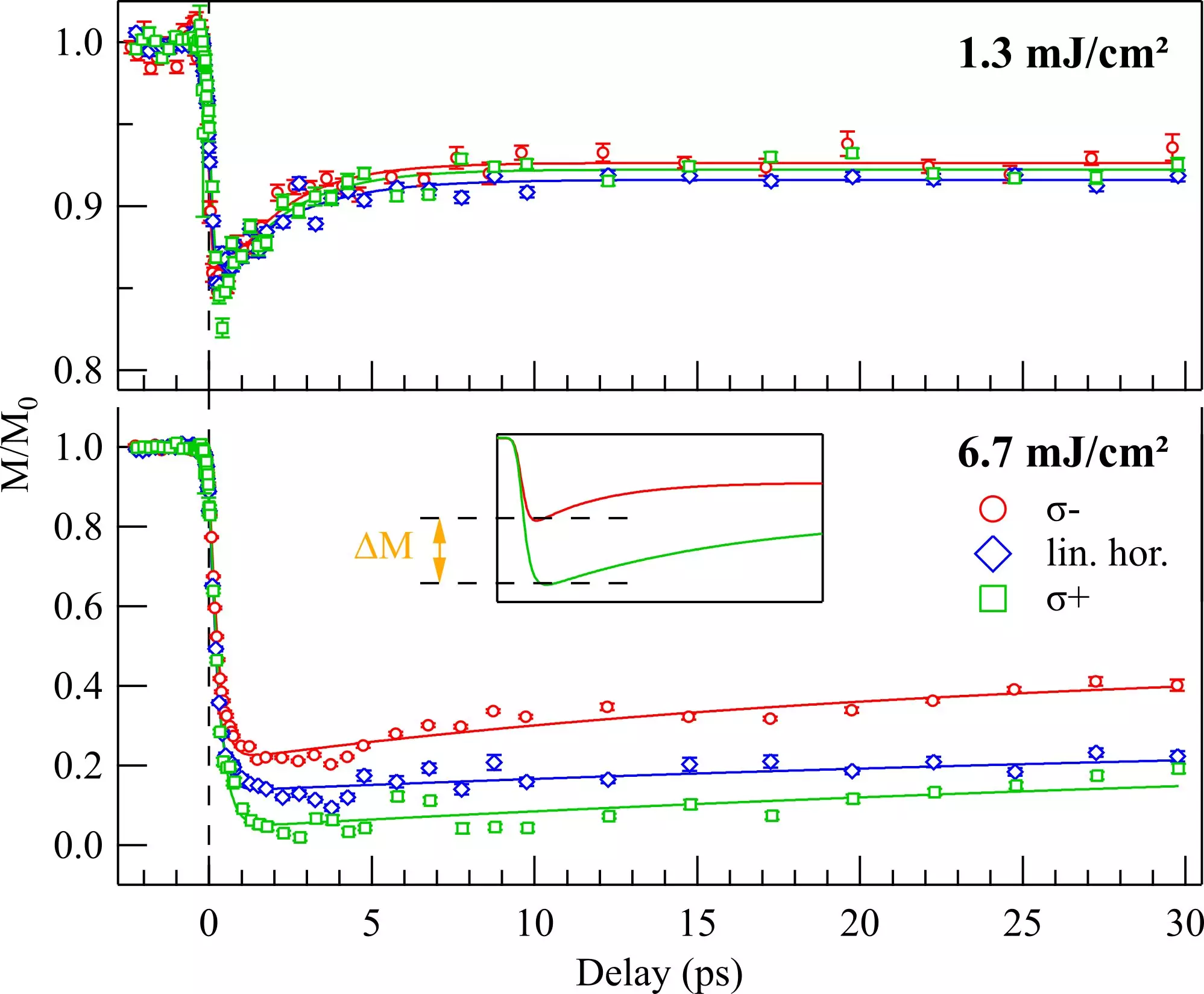In the realm of ultrafast magnetization manipulation, intense laser pulses have long been used to induce rapid changes in the orientation of a material’s magnetization. However, these effects are typically thermally induced, as the absorbed laser energy quickly heats up the material, causing a perturbation in the magnetic order. Recently, scientists from the Max Born Institute (MBI) and an international research team have introduced a non-thermal approach to generating significant magnetization changes by utilizing circularly polarized pulses of extreme ultraviolet (XUV) radiation. This innovative technique offers a promising alternative to traditional thermal methods and opens up new possibilities in the field of ultrafast magnetism.
The conventional method of utilizing intense laser pulses to manipulate magnetization relies on the amount of energy absorbed by the material, leading to thermal effects that can limit the speed and efficiency of the process. In contrast, the non-thermal approach proposed by the researchers at MBI is based on the inverse Faraday effect (IFE), which enables a direct interaction between the polarization of the light and the magnetic moments in the material. This unique mechanism does not depend on electronic heating induced by light absorption but rather on a coherent interaction with the electronic spins, offering a more efficient and controlled way of manipulating magnetization.
To demonstrate the effectiveness of their non-thermal approach, the researchers utilized circularly polarized femtosecond pulses of XUV radiation, which were generated at the free-electron laser FERMI. By employing this specialized technique, the scientists were able to induce a strong IFE-induced magnetization in a metallic, ferrimagnetic iron-gadolinium (FeGd) alloy. The high photon energy of the XUV radiation allowed for resonant excitation of core-level electrons with strong spin-orbit coupling, leading to the generation of large opto-magnetic effects in the material. This novel experimental setup provided insights into the generation of magnetization changes on ultrafast time scales without the need for thermal effects.
The research findings demonstrated that the IFE-induced magnetization could reach up to 20-30% of the ground-state magnetization of the FeGd alloy, showcasing the potential of non-thermal methods in generating significant magnetization changes. Supported by theoretical models and simulations, the researchers were able to confirm that the observed effects were indeed a result of the IFE response and not due to thermal mechanisms such as X-ray magnetic circular dichroism (XMCD). These findings are expected to have a significant impact on the fields of ultrafast magnetism, spintronics, and coherent magnetization control, offering a new avenue for exploring nonlinear X-ray matter interactions.
The development of a non-thermal approach to manipulating magnetization through XUV radiation represents a major advancement in the field of ultrafast magnetism. By harnessing the power of circularly polarized XUV pulses and the IFE mechanism, scientists have successfully demonstrated a more efficient and controlled method for generating large magnetization changes in materials. These findings not only open up new possibilities for ultrafast magnetism and spintronics but also pave the way for further research into coherent magnetization control and nonlinear X-ray matter interactions.


Leave a Reply